| Our Solar System | |||||||||||||||||||||||||||||||||||||||||||||||||||||||||||||||||||||||||||||||||||||||||||||||||
| The Sun | |||||||||||||||||||||||||||||||||||||||||||||||||||||||||||||||||||||||||||||||||||||||||||||||||
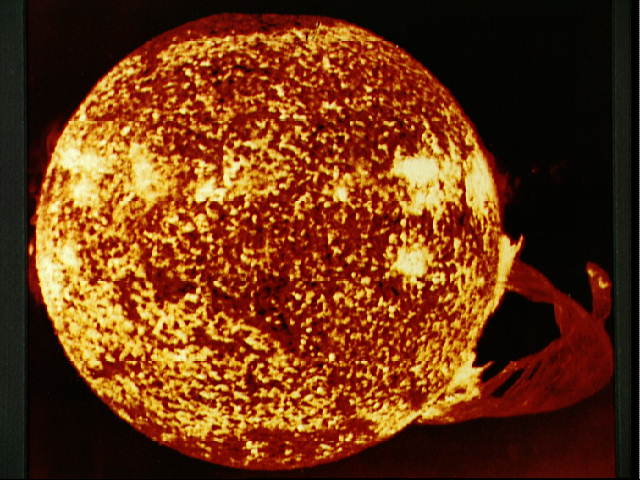
|
The Sun is our star. At the bottom left we can see the largest eruptive solar flare ever recorded. It was photographed by the spacecraft Skylab in 1973. This solar flare lasted a few hours long. The energy of the sun is produced by nuclear fusion. This means that two hydrogen atoms are crashed together to form a helium atom releasing energy. That is the energy we feel when we are in the sunshine. Nine planets orbit around the Sun. They are Mercury, Venus, Earth, Mars, Jupiter, Saturn, Uranus, Neptune, and Pluto. You can see a picture of them below. | ||||||||||||||||||||||||||||||||||||||||||||||||||||||||||||||||||||||||||||||||||||||||||||||||
| More about the Sun | |||||||||||||||||||||||||||||||||||||||||||||||||||||||||||||||||||||||||||||||||||||||||||||||||
| Mercury | |||||||||||||||||||||||||||||||||||||||||||||||||||||||||||||||||||||||||||||||||||||||||||||||||
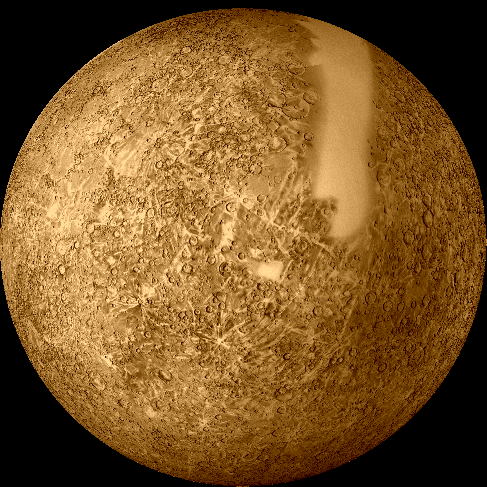
|
Mercury is the closest planet to the Sun. It is very similar to our moon. Both have many craters and are made of rock. Mercury is just a bit bigger than our moon. As Mercury slowly rotates, its surface temperature varies from an unbearably cold, -180 degrees Celsius, to an unbearably hot, 400 degrees Celsius. So during the day we would burn, and during the night we would freeze. Kepler said that planets describe an elipse while rotating around the Sun. Newton explained this with his theory of classical gravitation. But the orbit of Mercury around the Sun is an elipse that slowly rotates. This is explained by the general relativity theory of Einstein. | ||||||||||||||||||||||||||||||||||||||||||||||||||||||||||||||||||||||||||||||||||||||||||||||||
| Venus | |||||||||||||||||||||||||||||||||||||||||||||||||||||||||||||||||||||||||||||||||||||||||||||||||
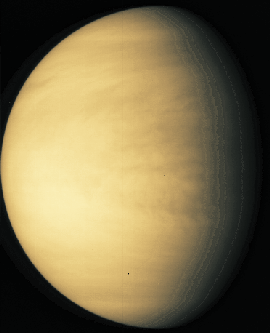
| Venus is known as the evening star. Venus is very similar to Earth in size and mass, and so is sometimes referred to as Earth's sister planet. But Venus has a quite different climate. Venus' thick clouds and closeness to the Sun make it the hottest planet, much hotter than the Earth. Humans could not survive there, and no life of any sort has ever been found. Venus spins in the opposite direcion to the Earth and most other planets. It takes longer for Venus to rotate once than it does for it to orbit the Sun. This means that on Venus,a day is longer than a year.
|
Earth
|
| 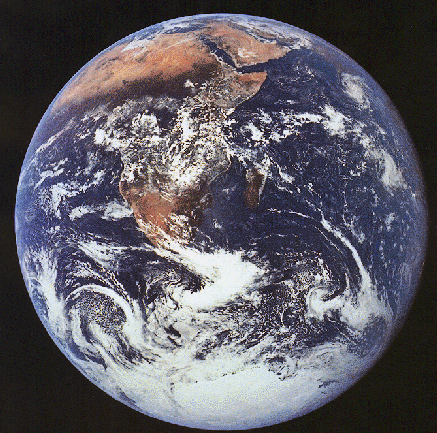
| The Earth's distance from the Sun causes it to have the right temperature for water to exist as a liquid, rather than just as ice or water vapor. Earth also has a breathable atmosphere. Animals and plants need both things in order to live.
|
Mars
|
| 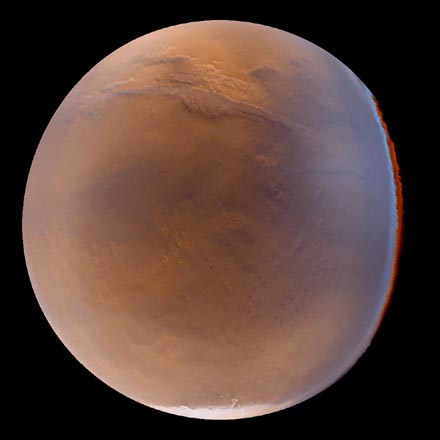
| Mars is the fourth closest planet to the Sun. The first successful space probes to go to Mars were the Mariner space probes, in the 1960s. Then, in the 1970s, the viking probes sent back detailed photoghraphs of the surface. One of the viking probes had a surface rover known as Sojourner. Mars has two moons Phobos and Deimos, a theory about the two moons is that those moons are asteroids that got stuck by the gravitational pull of Mars. Another theory is that one of the moons called Phobos is going to crash on Mars.
More about Mars /
Martian satellites
|
|
Asteroid Belt
|
| 
| Asteroids are large pieces of either rock, or rock and metal. Scientists believe that they are bits and pieces that were left over when our Solar System formed 5,000 million years ago. Most asteroids orbit the Sun between Mars and Jupiter, in a region called the Asteroid Belt. Scientists thinka massive asteroid slammed into the Earth 65 million years ago. On February 14th, the NEAR spacecraft became the first artificial moon of an asteroid. Captured by the gentle gravity of a 20 mile long slipper-shaped mountain of rock, NEAR recorded this premier image while orbiting asteroid 433 Eros at a distance of about 200 miles.
|
Jupiter
|
| 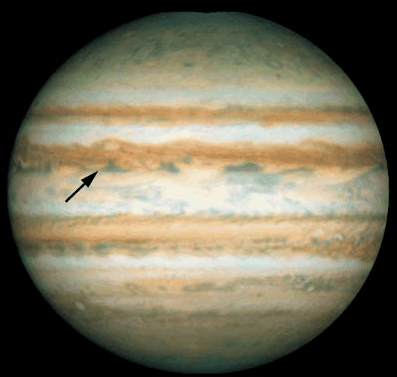
| Jupiter is the fifth closest planet to the Sun and also the largast planet of the Solar System. Jupiter's size is big enough as to fit 1.000 planets the size of Earth. People think that Jupiter has 16 moons, there might be more to discover.Jupiter is one of four planets that are made mostly of gas. The others are Saturn, Uranus and Neptune together they are called the gas giants. Jupiter has a spot a red spot that spot is called the great red spot, 100 years ago the size of the great red spot was the double size than it is now.The graet red spot is a huge storm 8km high, 40,000km long and 14,000km wide. Its winds blows at about 500km. The storm moves around, it swallowsup other storms.
|
Saturn
|
| 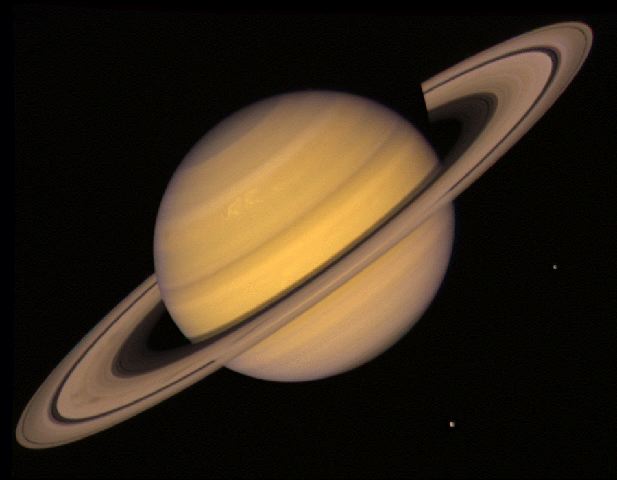
| Saturn is the 6th closest planet to the Sun, and second largest planet of the Solar System. This planet has the most noticeable rings of the Solar System.People sometimes call it the ringed planet because it has so many distinctive rings of dust and rock. Lying about 1,425 million km from the Sun, Saturn orbits once every 29 Earth years. Saturn is smaller than Jupiter but it is still enormous. It measures about 119,300km across - nine times wider than the Earth.Saturn spins very quickly, taking just ten hours to go around. As a result of this fast spin, the gases in its atmosphere are flung out towards its equator - the imaginary line around Saturn's middle.
|
Uranus
|
| 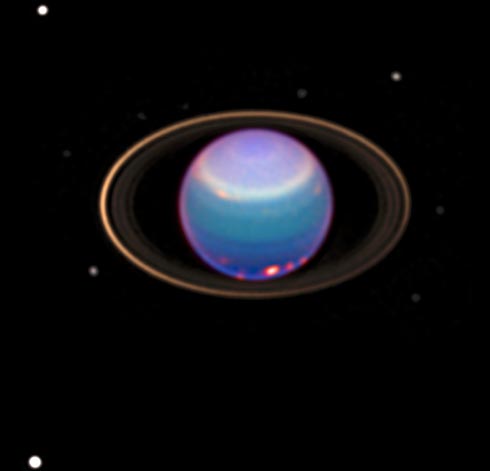
| Uranus is the 8th closest and third biggest planet of the Sun and typically appears as featureless. However, the Hubble Space Telescope was able to photoghraph Uranus in infrared light, where the distant planet better shous in unusual clouds, rings, and moons. Recent analysis indicates that clouds appear to circle Uranus at speeds in excess of 500km per hour. Several of Uranus' numerous small moons and it's rings are visible.
Uranus Satelites
|
|
Neptune
|
| 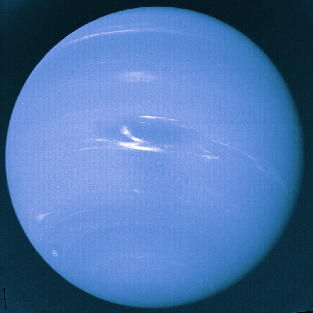
| This picture was taken by the Voyager 2 spacecraft in 1986 - the only spacecraft ever to visit Neptune. Neptune will be the furthest planet from the Sun until 1999, when the elliptical orbit of Pluto will cause it to once again resume this status. Neptune, like Uranus, is composed mostly of liquid water, methane and ammonia, is surrounded by a thick gas atmosphere of mostly hydrogen and helium, and has many moons and rings. Neptune's moon Triton is unlike any other and has active volcanoes. The nature of Triton's unusual orbit around Neptune is the focus of much discussion and speculation
|
Pluto
|
| 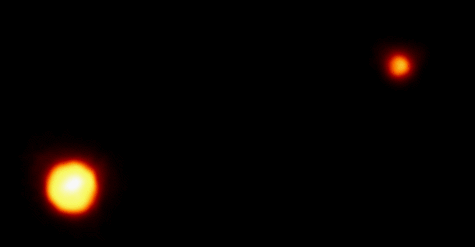
| The Hubble Space Telescope imaged Pluto and its moon Charon in 1994. Pluto is usually the most distant planet from the Sun but because of its elliptic orbit Pluto crossed inside of Neptune's orbit in 1979 and will cross back out again in 1999. Compared to the other planets, very little is known about Pluto. Pluto is smaller than any other planet and even smaller than several other planet's moons. From Pluto, the Sun is just a tiny point of light. Pluto is probably composed of frozen rock and ice, much like Neptune's moon Triton. Pluto has not yet been visited by a spacecraft, but a mission is being planned for the next decade.
|
Favourite links
|
|
| |||||||||||||||||||||||||||||||||||||||||||||||||||||||||||
|
This page has been visited
|
